Lovreć
We came across our first Stećci on a baking day in late July when it was almost 40°C (around 100°F), and we’d retreated to the car to enjoy the Dalmatian landscape with the benefit of air-conditioning. Travelling back from Imotski to Omiš on the D60, we were about 4km (2.5 miles) from Lovreć when we noticed a sign to our right announcing these 14th century monuments.
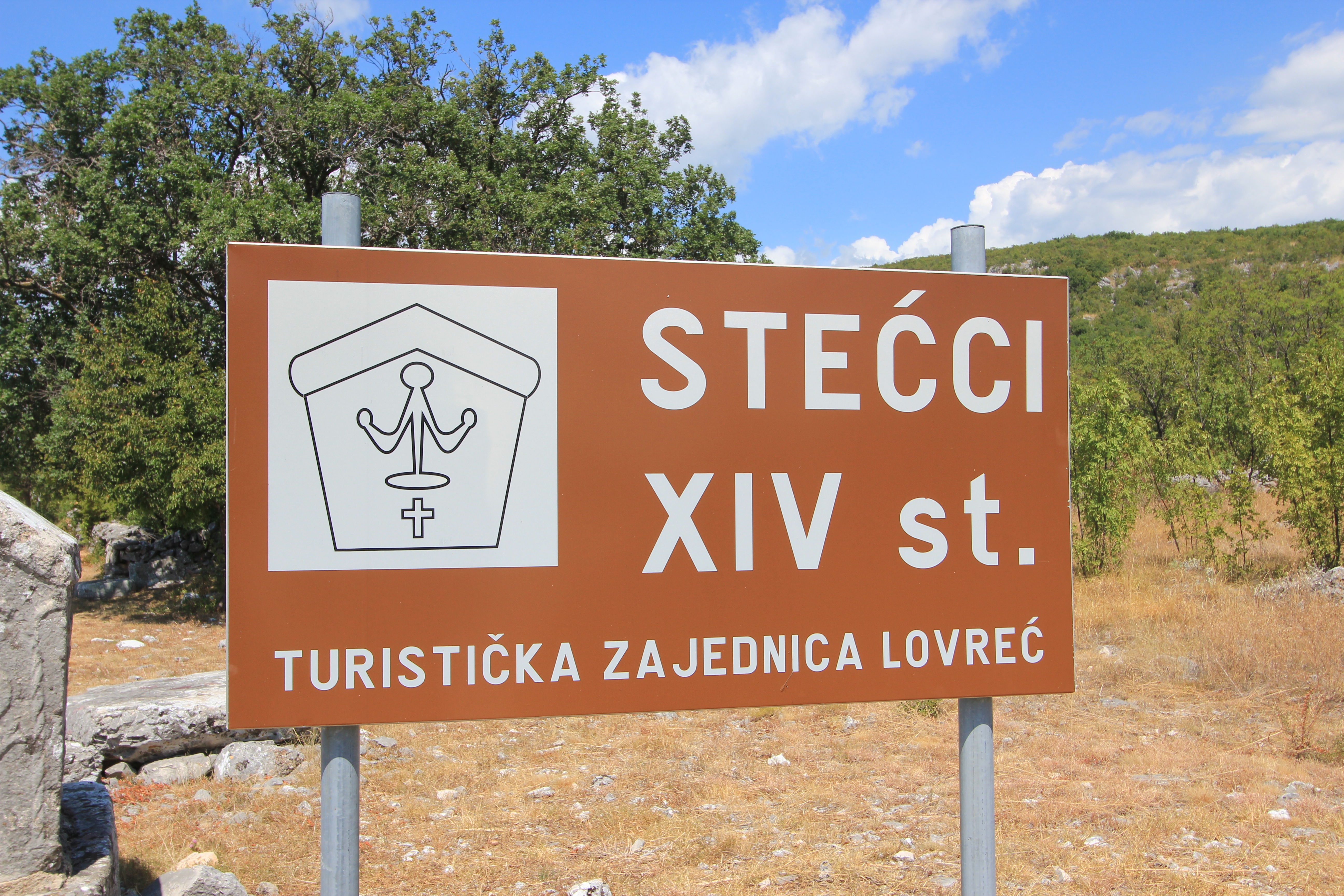
There is no formal parking here, and although fairly quiet this is a fast road, so we reversed onto a piece of hard standing on the opposite side (note the silver car in the image below). As is often surprisingly possible in Croatia, we had the site to ourselves, but what were we looking at?
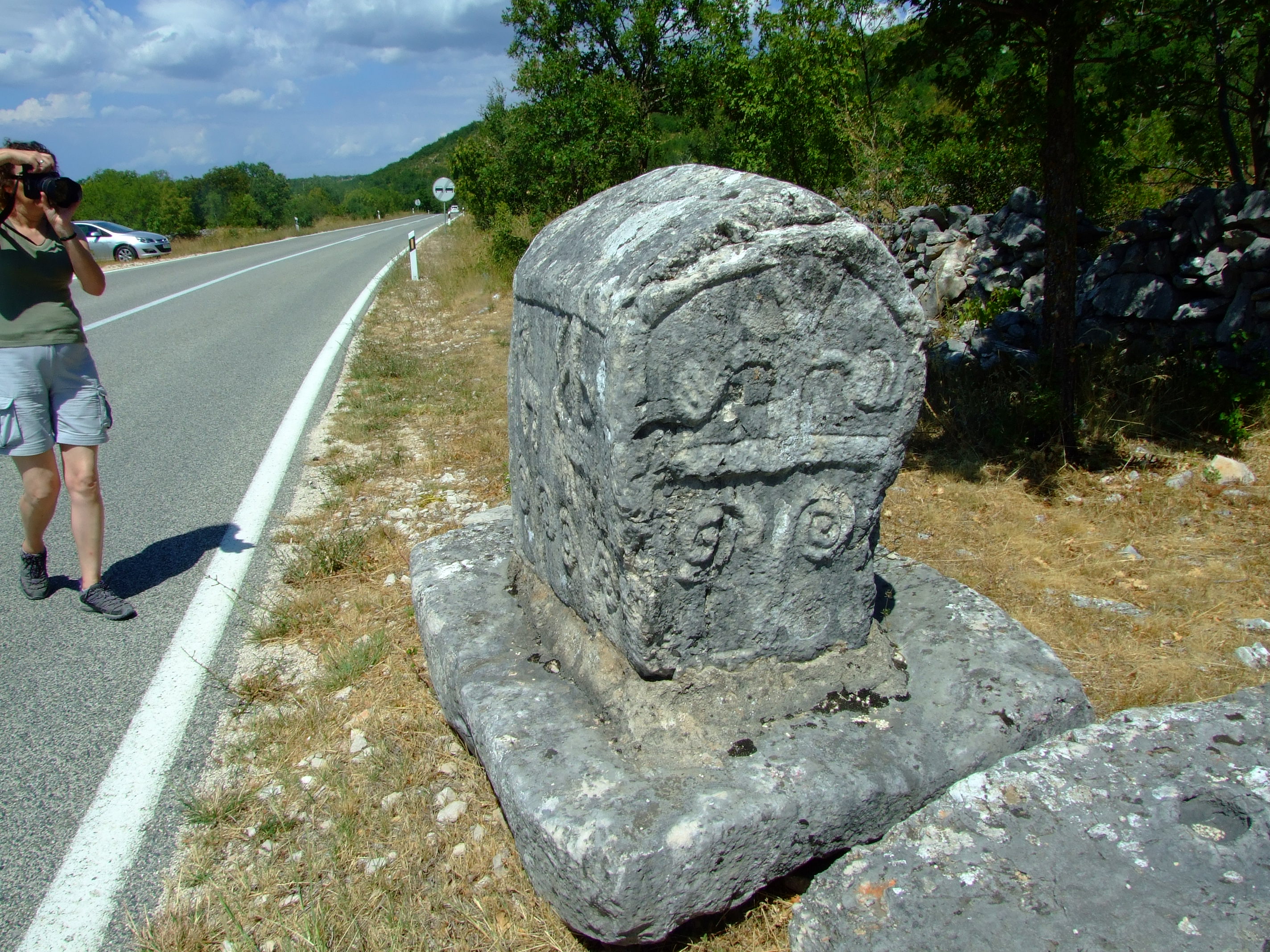
Stećci is the plural for a Stećak. They are elaborately sculpted tombstones created between the 12th and 15th centuries, which can only be found in the Balkan countries that claim parts of the former territory of the medieval Bosnian Kingdom.
They are often engraved with epitaphs in the Bosnian Cyrillic text of the Bosnian Church from the period, and decorated with a variety of motifs that renowned scholar and campaigner Marian Wenzel has firmly identified as being part of a wider Bosnian tradition of artistic accomplishment. “Her work deciphering inscriptions on the tombstones demolished the myth that they were raised by adherents of the allegedly Bogomil Bosnian Church and she demonstrated conclusively that the Stećci were one aspect of a fashion followed by Catholic, Orthodox and Bosnian Church followers alike.” wrote one of her obituarists.
Despite the sometimes frayed relationships between the four countries in which Stećci can be found, in 2009 Bosnia-Herzegovina, Croatia, Montenegro and Serbia jointly nominated them to the UN World Heritage List as a shared cultural heritage.
There are two Stećci necropolises in Lovreć municipality. The one we visited is called Kamenjak, and comprises 13 ridge topped tombstones (or “sljemenjak” in reference to the distinctive ‘gabled’ design), 14 chests and 2 plates. The carvings are mostly quite distinct, even after so many years of exposure to the elements, with religious/symbolic single and double spiral motifs, and scenes from everyday life, most strikingly of deer hunting and horseback pursuit, and possibly human conflict.
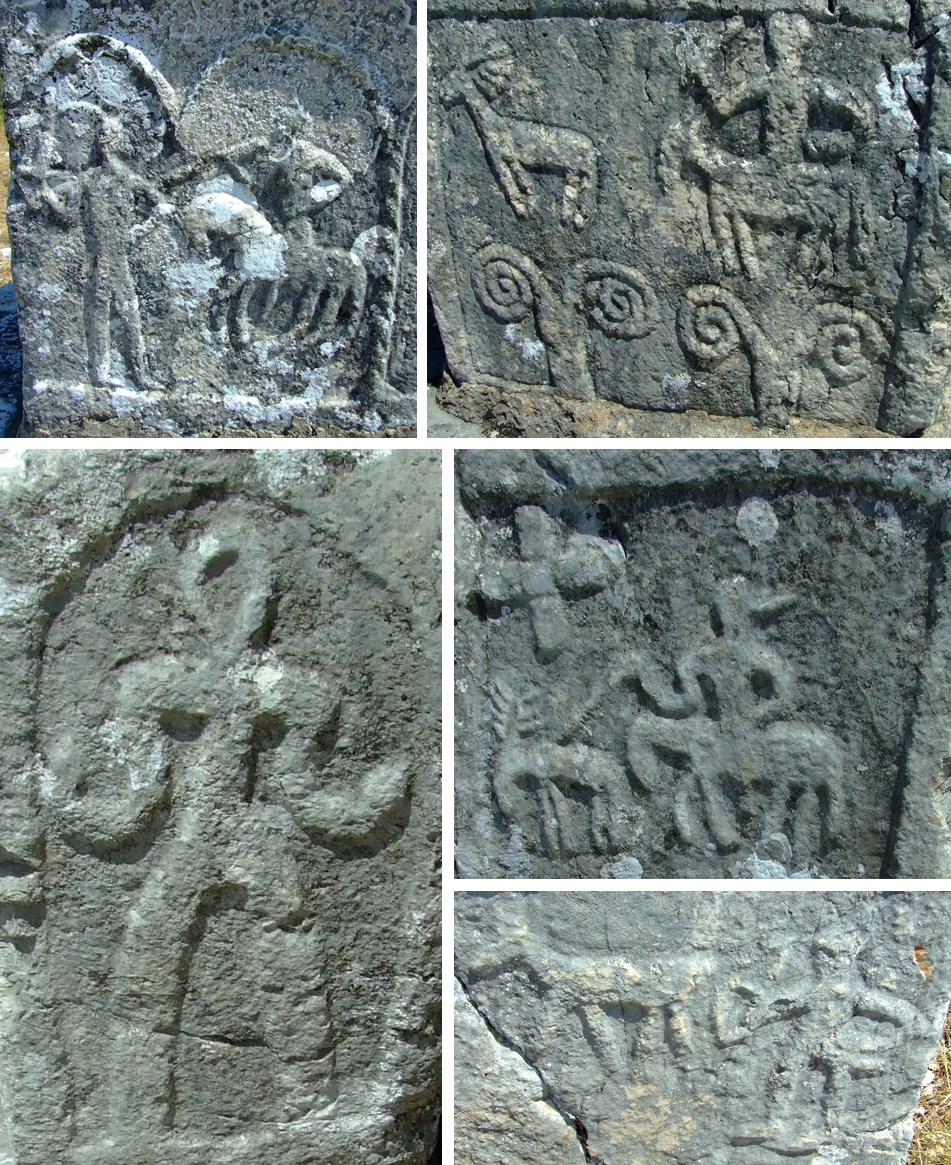
As an insight into a unique regional, historical cultural phenomena, the Lovreć Stećci are well worth stopping for before time, traffic pollution and neglect diminish the opportunity. Inspired by our first experience of these funeral monuments, we went searching for more Stećci a few days later.
Brotnice
Whilst staying near Dubrovnik we took a drive down to Konavle municipality, and heading left off the main highway (D8, the Jadranska Magistrala), turned up into the hills approaching the mountainous border with Bosnia-Herzegovina. Only a few minutes away from the coastal tourist strip of Župa Dubrovacka and Cavtat, the comparative isolation of this area belies the fact that you are travelling in one of the wealthiest regions of present day Croatia. The rugged landscape reveals pockets of agriculturally based old wealth, and has a fascinating history that includes Roman settlement and attempts to hold back the Ottoman empire, (but we’ll save that for a future post). On our day out we went to find the Brotnice Stećci.
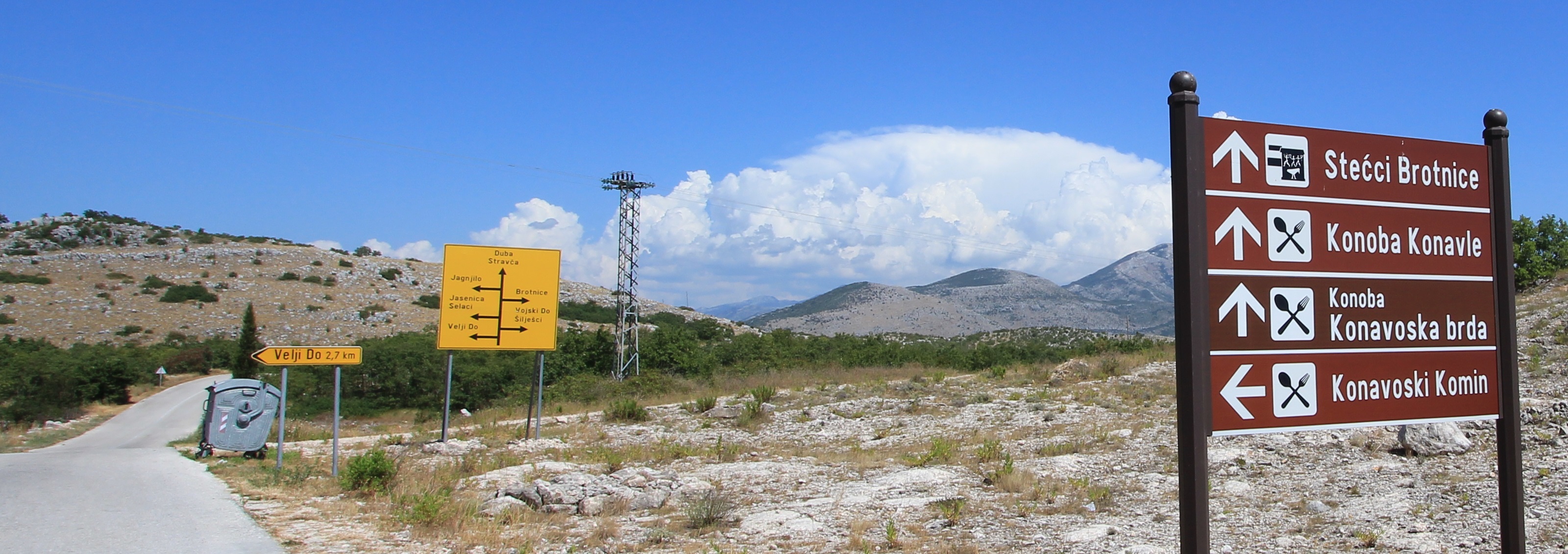
As you can see above, the road is well surfaced. Many of Croatia’s roads are excellent, and here we drove along newly asphalted sections and the parked road laying machinery that was extending the metalled surface inland, almost reaching our destination. The winding route led us past fields of pumpkins and groves of olives, but meeting any other traffic was an almost non-existent event.
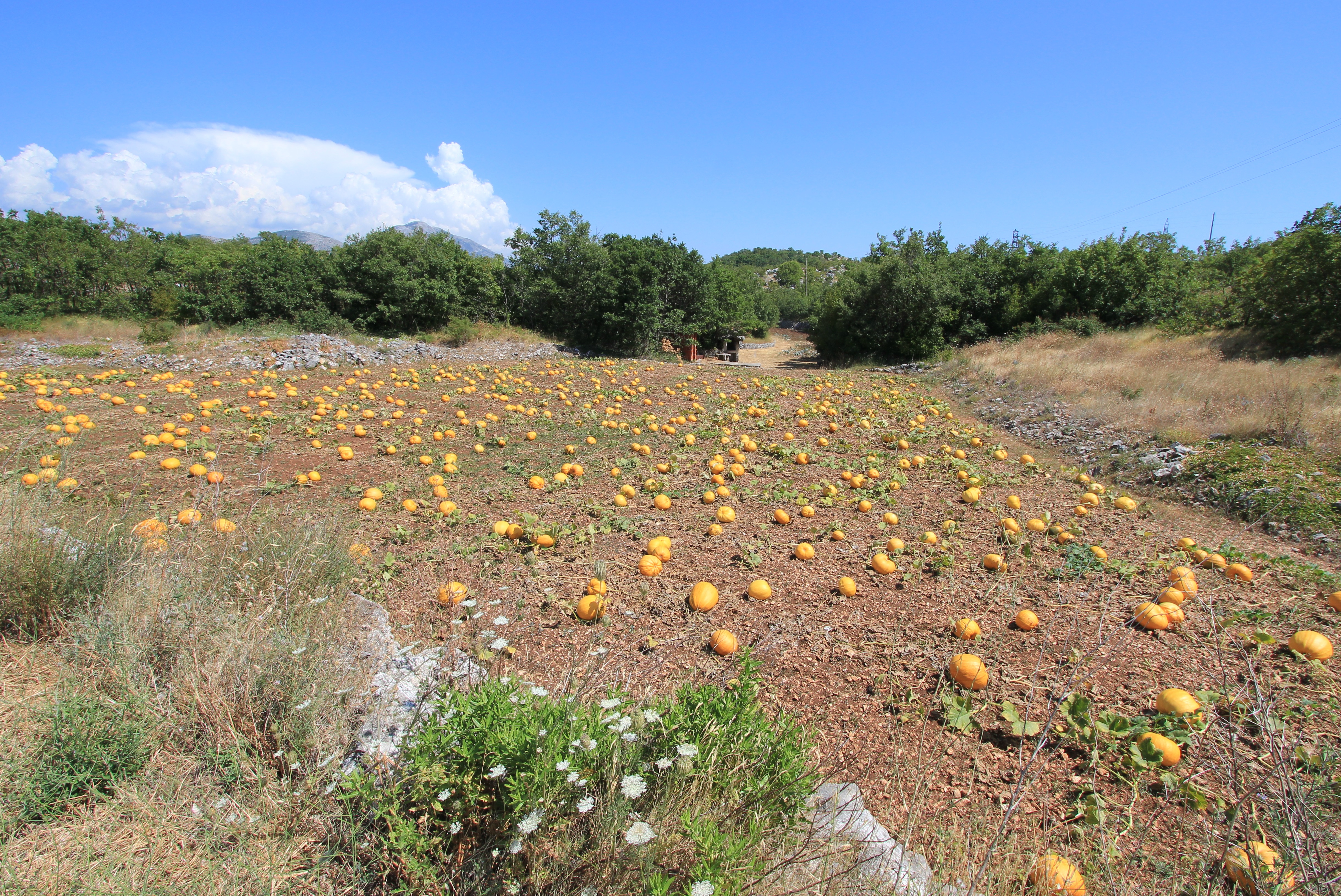
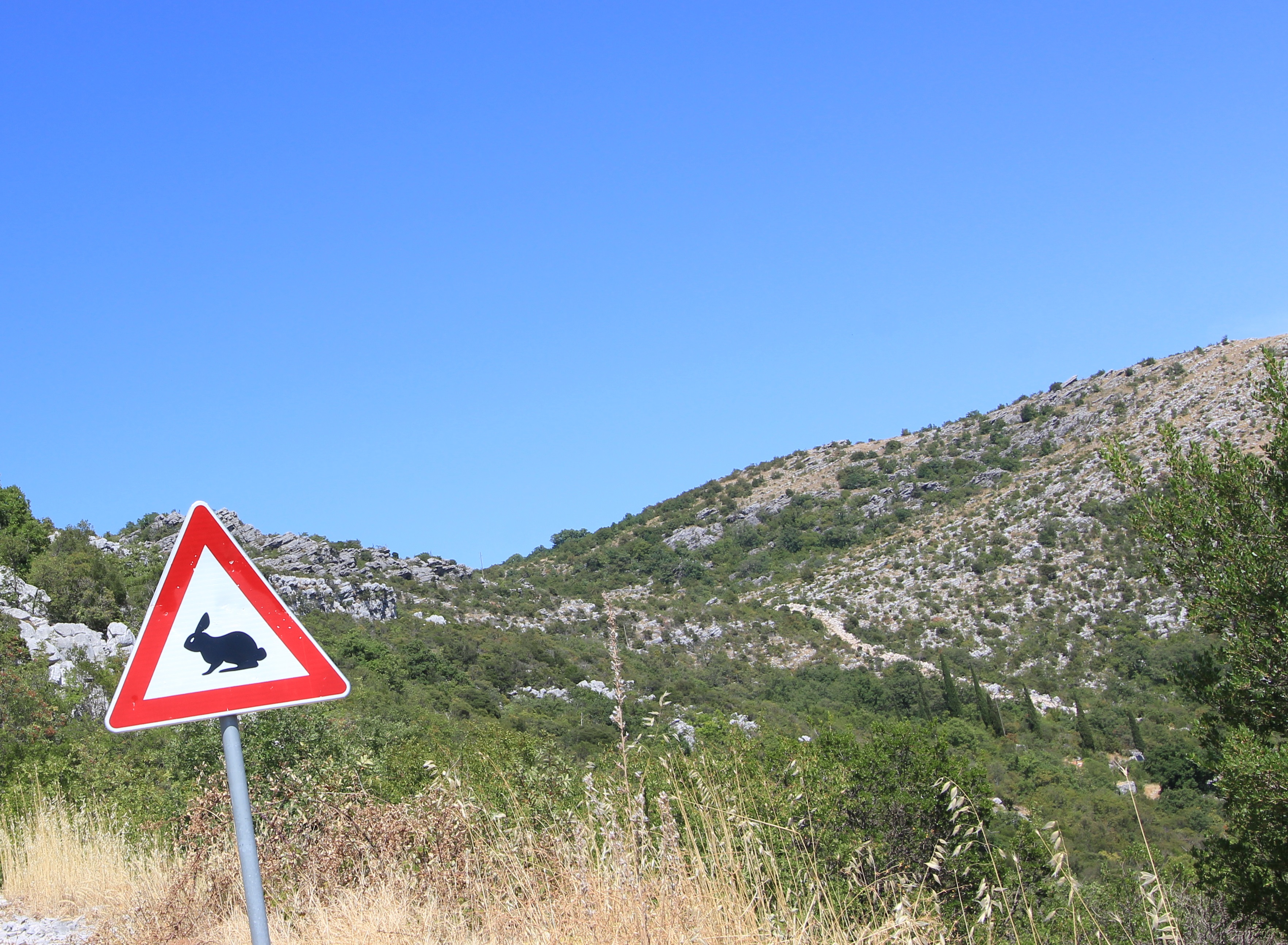
The signposting helped to get us to the vicinity of our quest (although I’m still not sure about the purpose of the rabbit ‘warning’ sign), and we eventually ended up down an unpaved track in a farmyard where a local resident re-directed us to our destination, He also noted that we should drive all the way as the final section of track would be crawling with “poisonous snakes”. Of Croatia’s 15 species of snake only 3 are venomous, and of these only the Horn-nosed Viper (“Poskok” in Croatian) is of potentially serious concern, but I digress as, despite liking snakes, we didn’t see one.
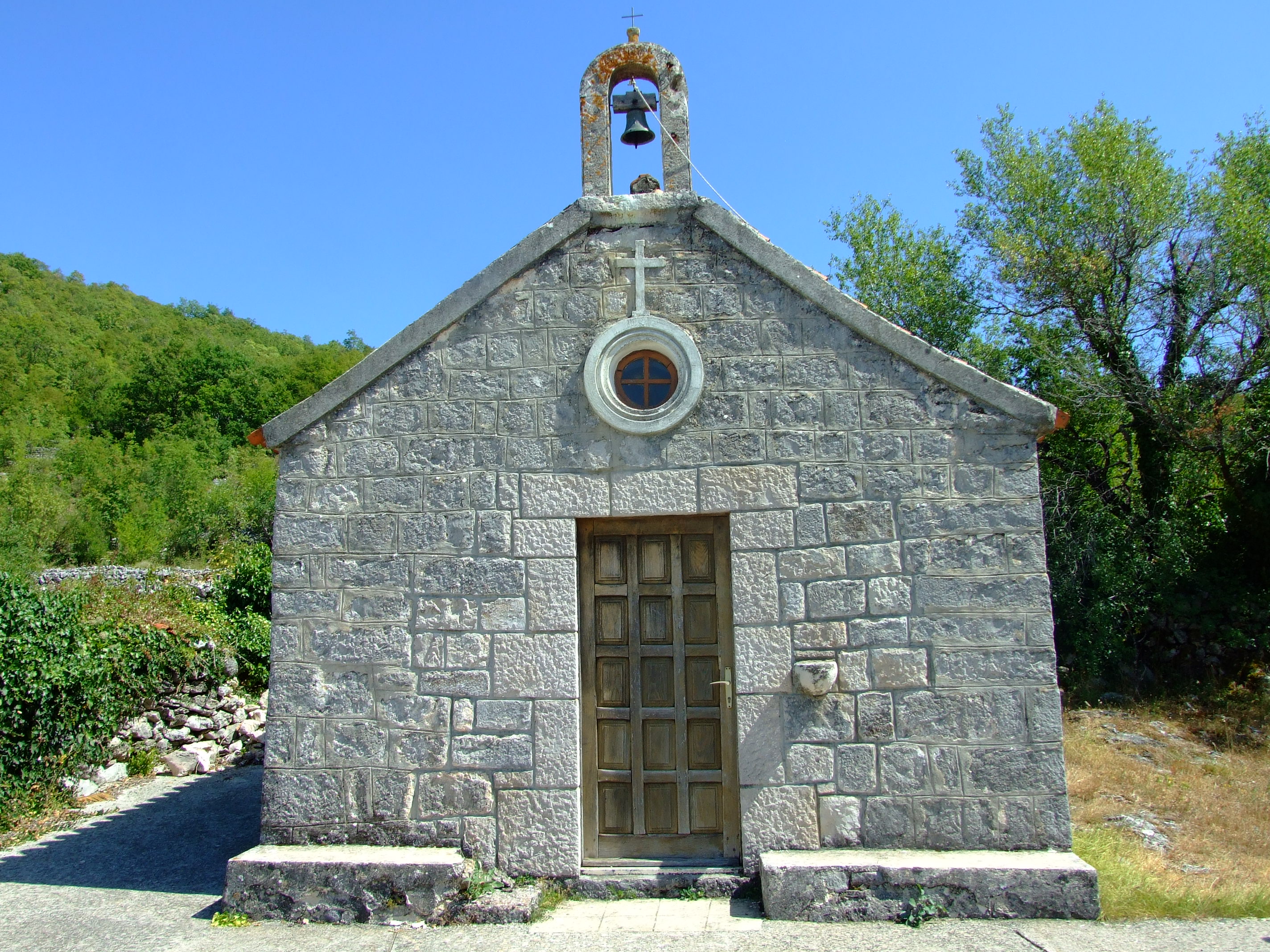
At 42°35’32″N, 18°17’58″E we found the small church of Sv. Luka. There’s plenty of free parking space here, and the chances are that you will have the place to yourself. At the entrance to the church yard you are greeted by a modern monolith with a slowly de-laminating text that reminds you that they don’t make them like they used to!
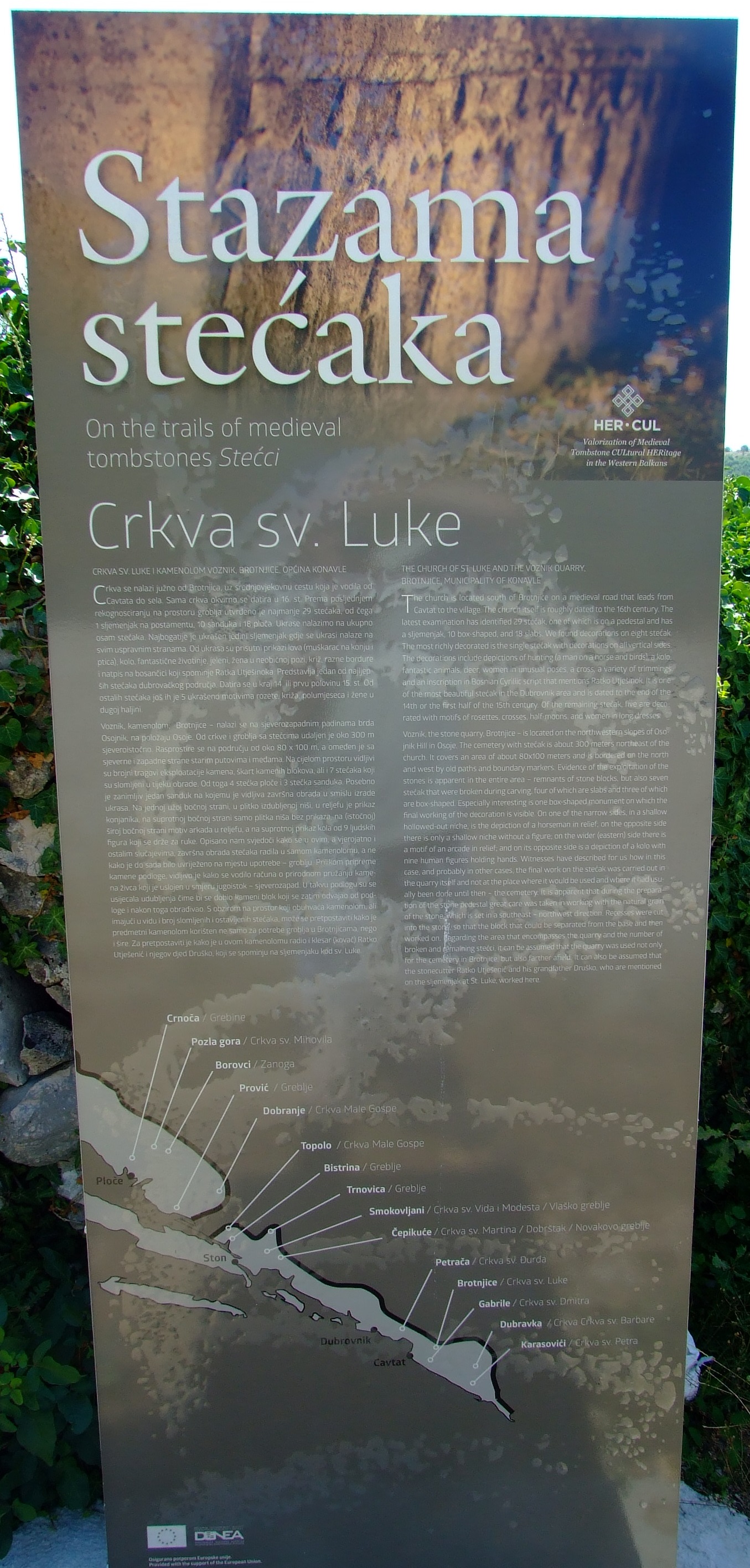
As part of the ‘Tombstone Path’ (“Stazama stećaka”) of southern Dalmatia it provides the locations of other Stećci in the area, and contains the following description of the site:
THE CHURCH OF ST. LUKE AND THE VOZNIK QUARRY, BROTNJICE, MUNICIPALITY OF KONAVLE
The church is located south of Brotnjice on a medieval road that leads from Cavtat to the village. The church itself is roughly dated to the 16th century. The latest examination has identified 29 stećak, one of which is on pedestal and has a sljemenjak, 10 box-shaped and 18 slabs. We found decorations on eight stećak. The most richly decorated is the single stećak with decorations on all vertical sides. The decorations include depictions of hunting (a man on a horse and birds) a kolo, fantastic animals, deer, womem in unusual poses, a cross, a variety of trimmings and an inscription in Bosnian Cyrillic script that mentions Ratko Utješinok. It is one of the most beautiful stećak in the Dubrovnik area and is dated to the end of the 14th or first half of the 15th century. Of the remaining stećak five are decorated with motifs of rosettes, crosses, half-moons and women in long dresses.
Voznik, the stone quarry, Brotjnice – is located on the northwestern slopes of Osojnik Hill in Osoje. The cemetery with stećak is about 300 meters northeast of the church. It covers an area of about 80×100 meters and is bordered on the north and west by old paths and boundary markers. Evidence of the exploitation of the stones is apparent in the entire area – remnants of stone blocks, but also seven stećak that were broken during carving, four of which are slabs and three of which are box-shaped, Especially interesting is one box-shaped monument on which the final working of the decoration is visible. On one of the narrow sides, in a shallow hollowed-out niche, is the depiction of a horseman in relief; on the opposite side there is only a shallow niche without a figure; on the wider (Eastern) side there is a motif of and arcade in relief; and on its opposite side is a depiction of a kolo with nine human figures holding hands. Witnesses have described for us how in this case, and probably in other cases, the final work on the stećak was carried out in the quarry itself and not at the place where it would have been used and where it had usually been done until then – the cemetery. It is apparent that during the preparation of the stone pedestal great care was taken in working with the natural grain of the stone which is set in a southeast northwest direction. Recesses were cut into the stone so that the block could be separated from the base and then worked on. Regarding the area that encompasses the quarry and the number of broken and remaining stećci, it can be assumed that the quarry was used not only for the cemetery in Brotnjice, but also further afield. It can also be assumed that the stonecutter Ratko Utješinok and his grandfather Druško, who are mentioned on the sljemenjak at St. Luke, worked here.
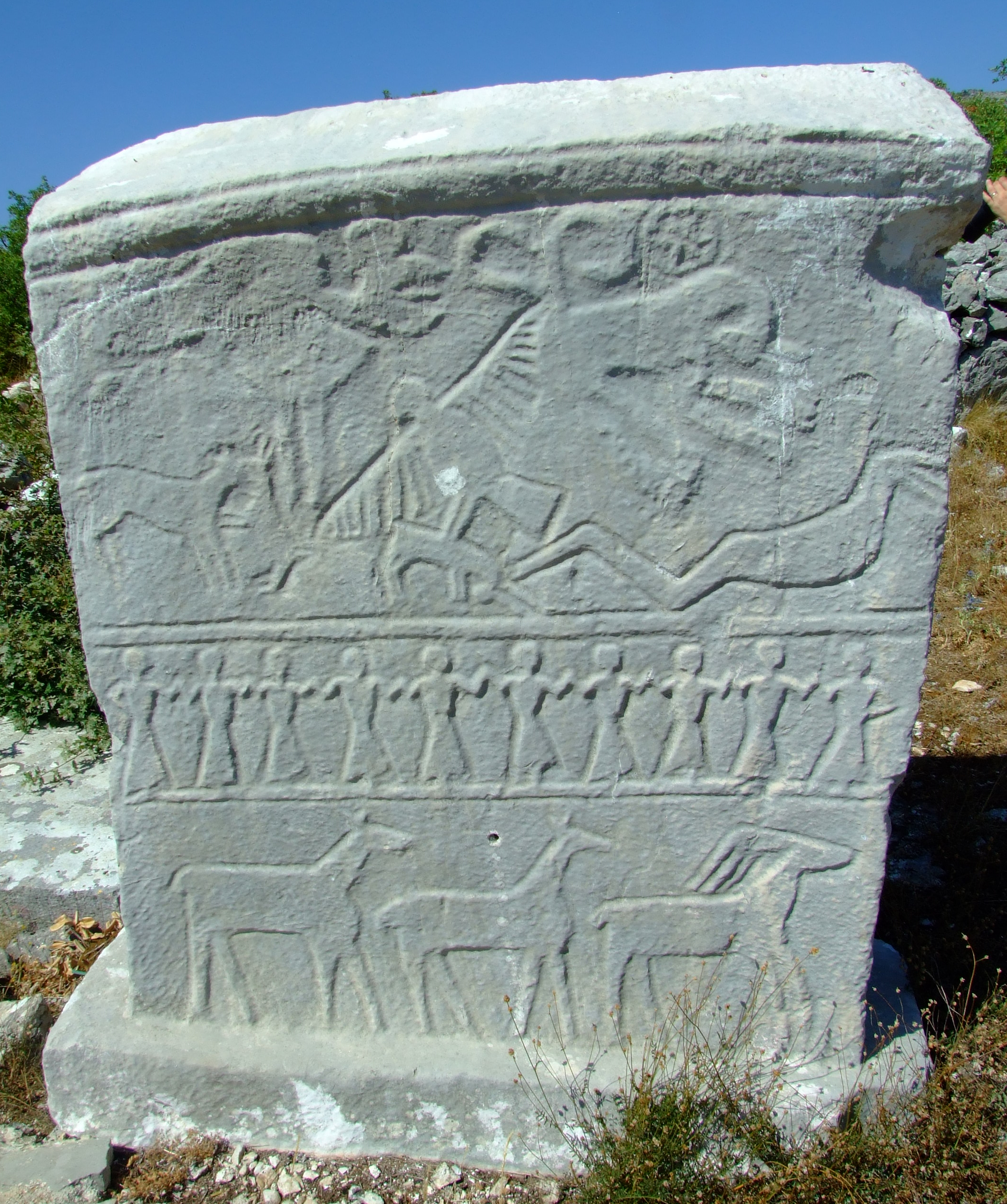
More online information.
The Rural Dubrovnik Neretva website has more on other places to find Stećci in southern Dalmatia, and a 5′ 35″ video which is worth a look.